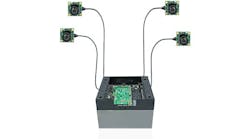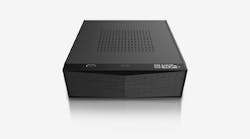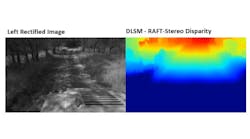A University of Texas at Arlington electrical engineer has received a grant for nearly $1 million that will enable him to build a robotic nursing assistant designed to assist nurses and other healthcare providers with routine duties.
Dan Popa (pictured above with a PR2 robot in the background) an associate professor in the Electrical Engineering Department, has received a $999,946 National Science Foundation Partnerships for Innovation: Building Innovation Capacity grant titled "Adaptive Robotic Nursing Assistants for Physical Tasks in Hospital Environments." For the project, Popa will work with the UT Arlington College of Nursing and Health Innovation, Texas Health Resources and the UT Arlington Research Institute on the three-year project.
Deborah Behan, a clinical associate professor at the College of Nursing and Health Innovation, and Patricia Newcomb, a Texas Health Resources nurse scientist, are collaborating with Popa and the College of Engineering.
"We have to make sure patients are monitored or don’t get out of bed without help," said Behan, who also is a nurse scientist for Texas Health Resources."Why not have robots perform those tasks? The robot could alert the nurse if an emergency is about to occur."
Current robotic platforms based on the PR2 vision-guided robot from Willow Labs, and the DR20 vision-guided robot from QinetiQ. The nursing assistant robot will be based on these platforms, but part of the goal, according to Popa, will be to make the robot look more like a nurse and less like a machine. While not explicitly mentioned in the press release, it would stand to reason that the new robots will feature some of vision system, given the fact that they will be used to monitor and help move patients.
Mickey McCabe, executive director at the UT Arlington Research Institute, commented on the research.
"You have to hear from nurses in the field about what they do, what is needed and what can be done before attempting to build a robot that would help nurses with tasks," McCabe said. "Engineering can answer practical questions about how we care for patients. Dr. Popa’s robot will help meet those challenges. UTARI provides the equipment and collaborative lab space for the ideas to merge."
The design process is expected to take a year and will involve close collaboration with robotics companies RE2 Inc. and QinetiQ. The testing phase will take place at the UT Arlington Research Institute and UTA’s Smart Hospital. Upon compleletion of this phase, the robot will be tested in Texas Health Resources hospitals.
"We believe there is a big market for this kind of robot to assist nurses," said Popa. "The robot isn’t designed to replace nurses, just to help make them more productive."
View the press release.
Share your vision-related news by contacting James Carroll, Senior Web Editor, Vision Systems Design
To receive news like this in your inbox, click here.
Join our LinkedIn group | Like us on Facebook | Follow us on Twitter | Check us out on Google +






